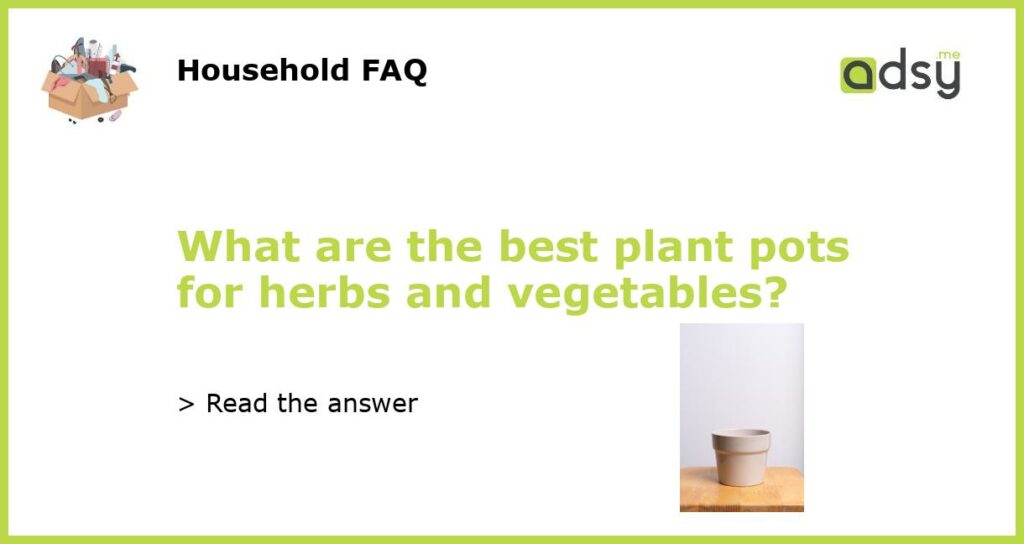The best plant pots for herbs and vegetables
If you are interested in growing your own herbs and vegetables but don’t have a garden or outdoor space, plant pots are a great solution. With the right pots, you can grow a variety of herbs and vegetables in your kitchen or balcony. In this article, we will explore the best plant pots for herbs and vegetables, considering factors such as drainage, material, and size.
Self-watering pots for consistent moisture
One of the biggest challenges in growing herbs and vegetables in pots is maintaining consistent moisture levels. Self-watering pots, also known as sub-irrigation pots, are designed to solve this problem. These pots have a reservoir that holds water, which gradually seeps into the soil, ensuring that the plants receive a consistent supply of moisture. This is particularly helpful during hot summer months or when you’re away on vacation. Look for self-watering pots that have a water level indicator, so you know when it’s time to refill the reservoir.
Terra cotta pots for natural airflow
Terra cotta pots are a classic choice for growing herbs and vegetables. Made from porous clay, these pots allow for natural airflow, helping to prevent waterlogging and root rot. The porous nature of terra cotta also promotes evaporation, which can be beneficial for plants that prefer drier conditions, such as rosemary or lavender. However, keep in mind that terra cotta pots can dry out quickly, so regular watering may be necessary, especially during hot weather. To prevent your pot from cracking in freezing temperatures, make sure to bring it indoors or wrap it with insulating material.
Fabric pots for improved root health
Fabric pots, also known as grow bags, are becoming increasingly popular among herb and vegetable gardeners. These pots are made from breathable fabric, which allows for improved root development and air circulation. The breathable nature of fabric pots also prevents overwatering, as excess moisture can drain away more easily. In addition, fabric pots are lightweight and can be easily moved, making them ideal for balconies or small spaces. When choosing a fabric pot, look for one with sturdy handles and a good drainage system.
Hanging pots for vertical gardening
If you have limited space, hanging pots can be a creative solution for growing herbs and vegetables. These pots can be suspended from a wall, railing, or ceiling, allowing you to make the most of your vertical space. Hanging pots are available in various materials, including plastic, metal, and ceramic. When choosing a hanging pot, consider the weight of the pot and plant, as well as the strength of the support structure. It’s also important to choose pots with proper drainage to prevent waterlogged soil.
Raised garden beds for larger harvests
If you have a larger outdoor space, raised garden beds are an excellent option for growing herbs and vegetables. These beds provide a larger planting area, allowing you to grow a greater variety of plants and have higher yields. Raised garden beds also have better drainage than traditional pots, preventing waterlogging and root rot. They can be made from a variety of materials, such as wood, metal, or plastic. When setting up a raised garden bed, ensure that the soil is well-prepared and enriched with organic matter for optimal plant growth.






